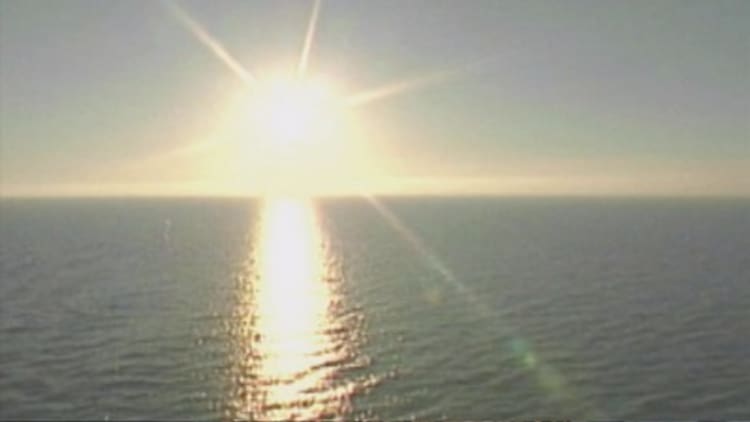
Nautilus Minerals believes the future of mining lies at the bottom of the ocean. The Australian-Canadian company on Tuesday revealed some of the remote-controlled vehicles that will be cutting up the ocean floor in search of copper, gold, nickel, and other minerals. They are arguably the first machines of their kind in the world.
All three machines are around 50 feet long, 15-20 feet wide, and weigh anywhere from 220 to 340 U.S. tons.
All three machines can be operated remotely from control rooms on a ship that sits on the surface of the ocean. The ship will be connected to a central pumping system that will pipe minerals upward.
The auxiliary cutter begins the work by grinding down the seafloor to make it level enough for the second piece of equipment, the bulk cutter. That machine grinds the resulting slurry up fine enough for the collection machine to suck it up before it is sent to a ship on the surface.
On the ship, the water is separated from the rock, particles larger than 8 microns are filtered out and the water is pumped back to the seafloor.
The company held a design competition to pick the contractors that will build the equipment. The main contract for the cutters and the collection machine went to SMD, a maker of subsea remote vehicles based based near Newcastle, England. Caterpillar made the track systems the vehicles use to drive around the ocean floor.
The designs are based on existing technology that companies use to dig trenches for oil and gas pipelines, according to Nautilus.
"They are a hybrid of oil and gas trenching equipment and continuous mining equipment found on land," Johnston told CNBC.
GE Oil and Gas Houston won the contract for the undersea pump system that will carry the slurry to the ship. Other companies, such as Rolls Royce Marine, Siemens, Konigsberg Maritime, also won contracts for other key pieces of equipment.
Johnston told CNBC that the ore the company has found on the ocean floor has much higher concentrations of copper, gold and other minerals than what's found on land, and that seafloor mining will do less damage to the environment than "terrestrial" mining.
Scientists and activists have called for the careful research of deep sea mining's environmental effects, and for the creation of underwater preserves to offset the effects mining may have on ocean environments.
And Nautilus is not the only company in the deep-sea mining game. Other companies, such as Lockheed Martin, have explored the possibility of mining the ocean floor.
Johnson said the company is on track to begin mining in the first quarter of 2018. Nautilus will likely first begin mining a site off the coast of Papua New Guinea, but has also secured contracts for sites elsewhere in the deep ocean.



